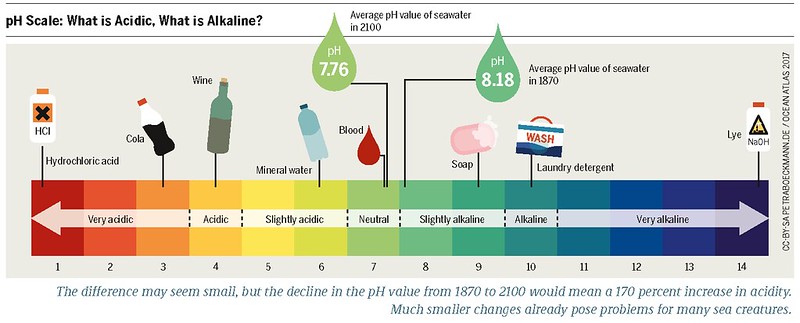The pH of a solution containing sodium hydroxide (NaOH) is a crucial factor to consider, as it determines the acidity or basicity of the solution. Sodium hydroxide is a strong base that completely dissociates in water, releasing hydroxide ions (OH-) and increasing the pH of the solution. Understanding the relationship between NaOH concentration and pH is essential for various applications, from water treatment to industrial processes.
Calculating the pH of a NaOH Solution
To calculate the pH of a NaOH solution, you need to determine the concentration of hydroxide ions (OH-) in the solution. Since NaOH is a strong base, it completely dissociates in water, and the concentration of OH- ions is equal to the initial concentration of the base.
The formula to calculate the pH of a NaOH solution is:
- Determine the pOH: pOH = -log[OH-]
- Calculate the pH: pH = 14 – pOH
For example, if you have a 0.1 M solution of NaOH, the concentration of OH- ions in the solution is 0.1 M. To find the pOH, take the negative logarithm (base 10) of the hydroxide ion concentration:
pOH = -log[0.1] = 1
Then, to calculate the pH, use the relationship between pH and pOH:
pH = 14 – pOH = 14 – 1 = 13
Therefore, the pH of a 0.1 M solution of NaOH is 13, indicating a highly alkaline (basic) solution.
Effect of Contaminants on the pH of NaOH Solutions
When dealing with NaOH solutions, it is essential to consider the presence of any contaminants or unwanted substances and their effect on the pH of the solution. Acids can lower the pH, while bases can raise the pH. To balance the pH, you can add an acid or a base to the solution to neutralize the unwanted substance.
For instance, if you have a NaOH solution that is too basic due to the presence of a strong base, you can add a weak acid to lower the pH. A weak acid only partially dissociates in water, so it will not lower the pH as much as a strong acid.
On the other hand, if you have a NaOH solution that is too acidic due to the presence of a strong acid, you can add a strong base like NaOH to raise the pH.
When adding acids or bases to a NaOH solution, it is crucial to add them slowly and carefully, and to monitor the pH of the solution regularly. This will help you avoid overshooting the desired pH and ensure that the solution is properly balanced.
Importance of Maintaining the Correct pH in NaOH Solutions
Maintaining the correct pH in NaOH solutions is essential for various applications, such as:
-
Water Treatment: In water treatment processes, NaOH is often used to adjust the pH of the water to the desired level, ensuring the water is safe for consumption or industrial use.
-
Industrial Processes: Many industrial processes, such as chemical manufacturing, require specific pH levels to ensure the desired reactions occur or to prevent corrosion of equipment.
-
Environmental Regulations: Regulatory bodies often have strict guidelines on the pH levels of wastewater or effluents, and NaOH solutions may be used to adjust the pH to meet these requirements.
-
Cleaning and Disinfection: NaOH solutions are commonly used as cleaning agents and disinfectants, and the pH of the solution can affect its effectiveness and safety.
By understanding the relationship between NaOH concentration and pH, and the impact of contaminants on the solution, you can ensure that the pH of your NaOH solutions is properly maintained and optimized for your specific application.
Conclusion
The pH of a solution containing sodium hydroxide (NaOH) is a crucial factor to consider, as it determines the acidity or basicity of the solution. By understanding the relationship between NaOH concentration and pH, and the impact of contaminants on the solution, you can ensure that the pH of your NaOH solutions is properly maintained and optimized for your specific application. Whether you’re working in water treatment, industrial processes, or any other field that requires the use of NaOH solutions, mastering the principles of pH calculation and adjustment can help you achieve the desired results and meet regulatory requirements.
References:
- Socraticsocratic.org – How can I calculate pH of NaOH?
- Sciencing.com – How to Calculate the PH of NaOH
- YouTube.com – Find the pH of a 0.1M NaOH (Sodium hydroxide) Solution
- wpage.unina.it – Chemical equilibria: problems
- BYJU’S – What is the pH of 0.02 M Sodium Hydroxide solution?
- Lenntech.com – pH and alkalinity.

